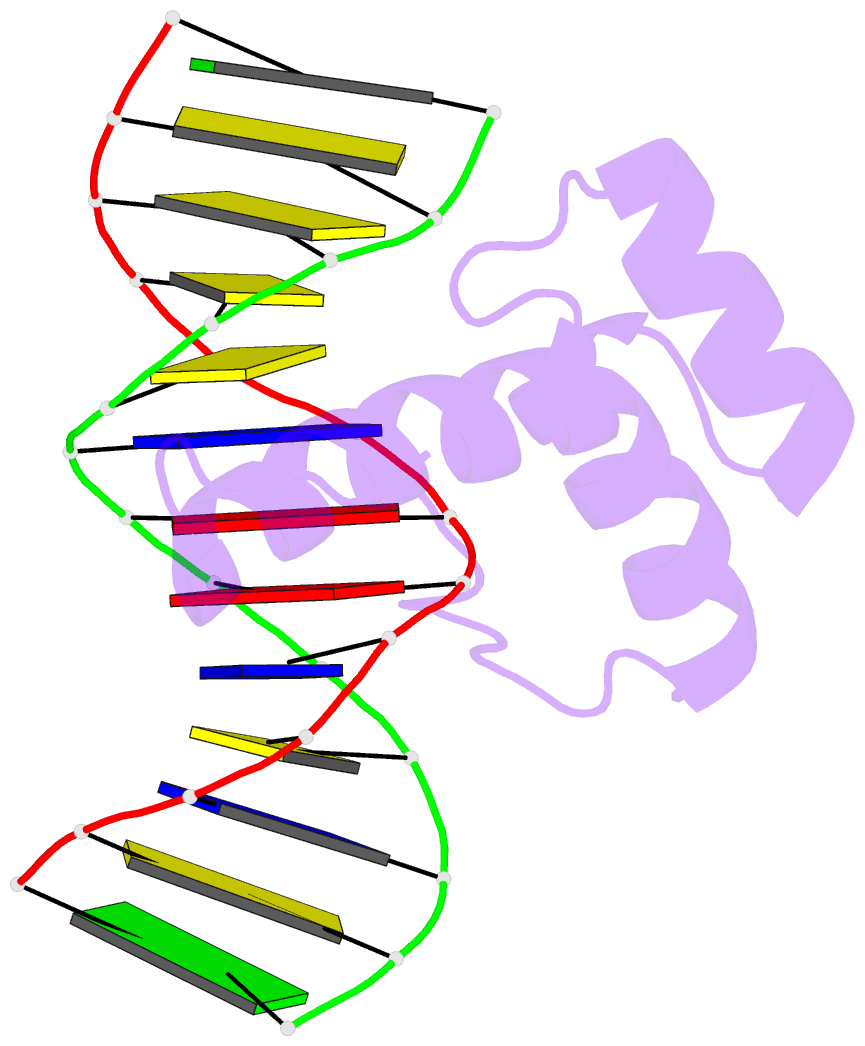Summary information and primary citation
- PDB-id
- 2lkx; SNAP-derived features in text and JSON formats;
DNAproDB
- Class
- transcription-DNA
- Method
- NMR
- Summary
- NMR structure of the homeodomain of pitx2 in complex with a taatcc DNA binding site
- Reference
- Chaney BA, Clark-Baldwin K, Dave V, Ma J, Rance M (2005): "Solution structure of the K50 class homeodomain PITX2 bound to DNA and implications for mutations that cause Rieger syndrome." Biochemistry, 44, 7497-7511. doi: 10.1021/bi0473253.
- Abstract
- We have determined the solution structure of a complex containing the K50 class homeodomain Pituitary homeobox protein 2 (PITX2) bound to its consensus DNA site (TAATCC). Previous studies have suggested that residue 50 is an important determinant of differential DNA-binding specificity among homeodomains. Although structures of several homeodomain-DNA complexes have been determined, this is the first structure of a native K50 class homeodomain. The only K50 homeodomain structure determined previously is an X-ray crystal structure of an altered specificity mutant, Engrailed Q50K (EnQ50K). Analysis of the NMR structure of the PITX2 homeodomain indicates that the lysine at position 50 makes contacts with two guanines on the antisense strand of the DNA, adjacent to the TAAT core DNA sequence, consistent with the structure of EnQ50K. Our evidence suggests that this side chain may make fluctuating interactions with the DNA, which is complementary to the crystal data for EnQ50K. There are differences in the tertiary structure between the native K50 structure and that of EnQ50K, which may explain differences in affinity and specificity between these proteins. Mutations in the human PITX2 gene are responsible for Rieger syndrome, an autosomal dominant disorder. Analysis of the residues mutated in Rieger syndrome indicates that many of these residues are involved in DNA binding, while others are involved in formation of the hydrophobic core of the protein. Overall, the role of K50 in homeodomain recognition is further clarified, and the results indicate that native K50 homeodomains may exhibit differences from altered specificity mutants.





